Abstract: Recently, the Research Group led by Associate Professor Liu Zhu from the Department of Earth System Science of Tsinghua University proposed a spatial representation model of carbon emissions based on near-real-time carbon emission quantification method and parameter model, and constructed the first near-real-time Global Gridded Daily CO2 Emission Dataset (GRACED), which provides important data support for dynamic monitoring of global carbon emissions and evaluation of carbon emission policies.
Global climate change is a severe challenge for the sustainable development of mankind. Carbon data is the basis of climate change research and related policy formulation, and also an important tool for visualization in the process of carbon neutrality and an important basis for evaluation of national peak carbon dioxide emissions. Therefore, it has drawn wide attention from the international community. In addition to the magnitude of carbon emissions, it is also necessary to study the sources, changes and future development trends of carbon emissions. A carbon emission dataset can provide key geographical location information of carbon emissions, which is the core data of climate change research.
However, due to technical limitations, the existing carbon emission datasets can only spatially show historical emission data year by year, while cannot reflect the dynamic spatial-temporal evolution of carbon emissions. The goal of global carbon emission reduction and carbon neutrality depends on timely, accurate and reliable dynamic monitoring and policy evaluation of carbon emissions. Hence, it is urgent to establish a new paradigm for spatial-temporal quantitative representation of carbon emissions.
In this context, a spatial representation model of carbon emissions based on near-real-time carbon emission quantification method and parameter model was proposed by Liu Zhu Research Group from the Department of Earth System Science of Tsinghua University in cooperation with several research institutions at home and abroad. The research results were published online in The Innovation, a Cell Press partner journal, under the title of “Near-real-time Global Gridded Daily CO2 Emissions”. At present, this dataset has been widely applied in the “United in Science 2021” of the World Meteorological Organization (WMO), the Global Carbon Budget 2021 of the Global Carbon Project (GCP), and the Emissions Gap Report 2021 of the United Nations Environment Programme (UNEP). Near-real-time global CO2 emission dataset will support the targeted carbon emission assessment of countries and regions, and help to adjust climate policies and measures in time, thus enabling the scientific and accurate realization of carbon neutrality.
This study constructs the first near-real-time Global Gridded Daily CO2 Emission Dataset (GRACED). By establishing the near-real-time calculation theory and model of carbon emissions with a temporal resolution of 1 day and combining with automatic processing and assimilation of data collected from multiple sources by multiple observation means, a model framework for near-real-time gridded CO2 emission calculation is built, which further improves the spatial-temporal resolution of global carbon emission data and advances the research on the spatial-temporal dynamics of global carbon emissions from the “past tense” to the “present tense”.
GRACED records the daily variation of global carbon emissions since January 1, 2019, and is the only sectoral near-real-time global carbon emission dataset with a temporal resolution of 1 day. The dataset covers more than 90% of the global CO2 emissions from seven major emission sectors: electricity, industry, household consumption, ground transportation, domestic aviation, international aviation and international shipping.
GRACED reflects the spatial-temporal dynamic change characteristics of carbon emissions caused by changes in human activities, including real-time dynamic changes of carbon emissions caused by climate, seasons, holidays and even COVID-19 (In Fig. 1, the redder the color, the more the carbon emissions, the bluer the color, the less the carbon emissions).
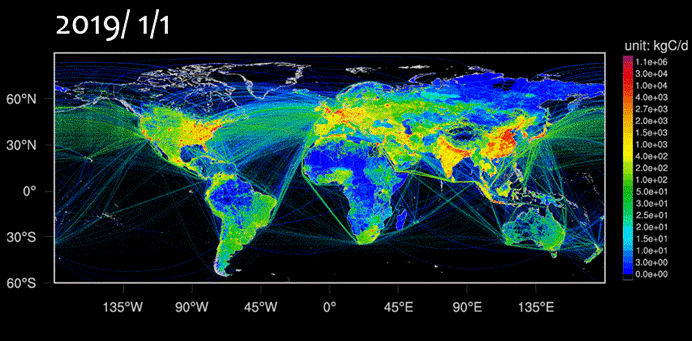
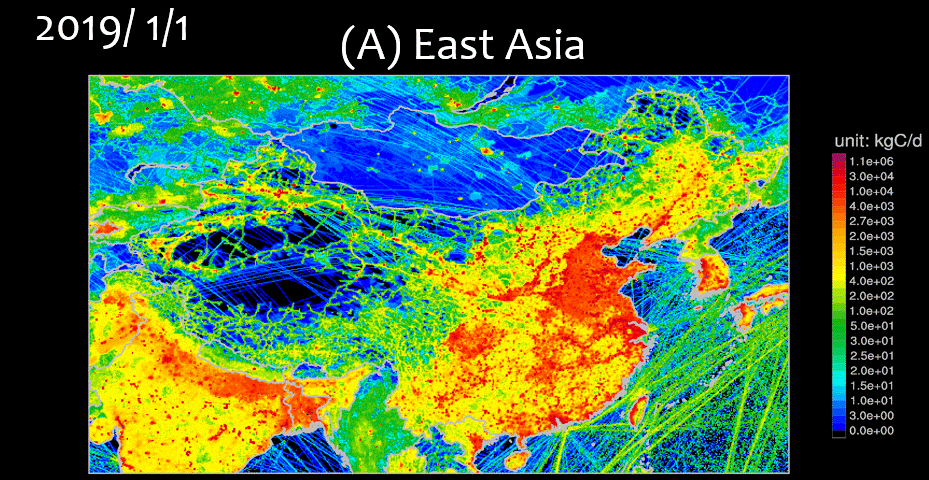
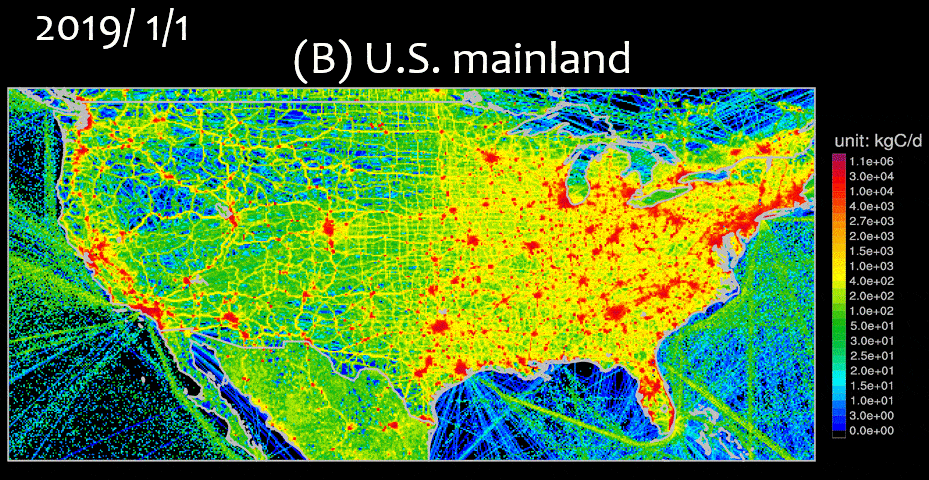
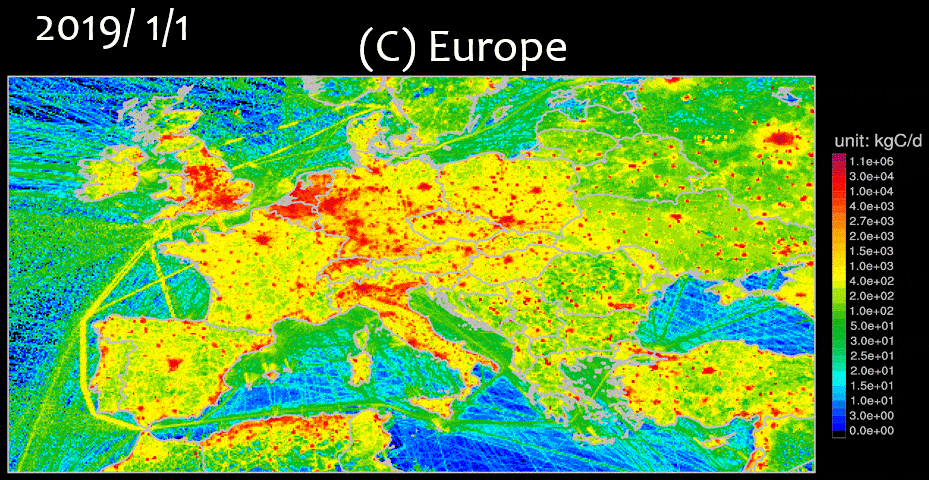
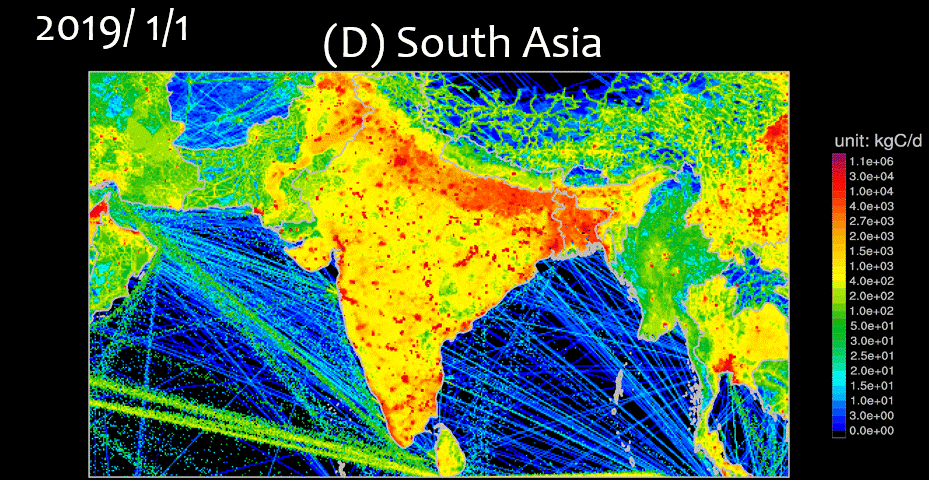
Fig. 1 Real-time Dynamic Change of Carbon Emissions in the World and Key Emission Areas from January 2019 to June 2021 (A. East Asia; B. USA; C. Europe; D. South Asia)
GRACED covers key emission areas including key cities in the world, and quantitatively characterizes the temporal and spatial dynamic characteristics of sectoral emissions. GRACED shows that the carbon emissions in Beijing, Shanghai and Wuhan declined greatly due to the outbreak of COVID-19 at the end of January 2020, while tended to be stable after the outbreak was controlled. The impact of the outbreak come later in Los Angeles, Paris and Johannesburg, and the emissions in these cities dropped significantly in April and May (Fig. 2).
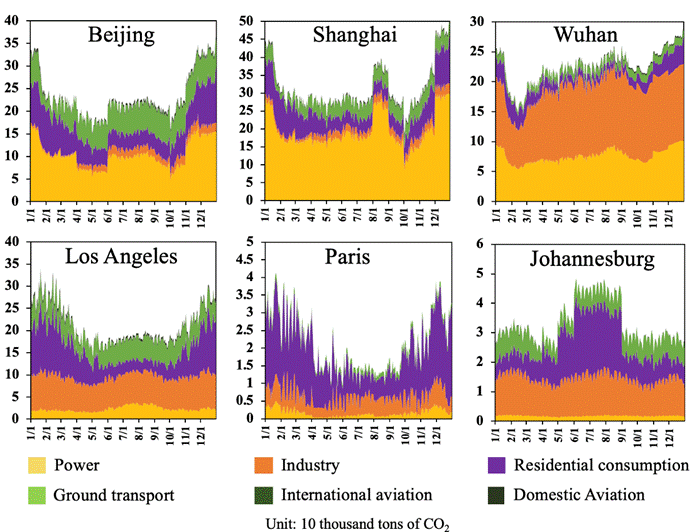
Fig. 2 Sectoral Daily Emission Fluctuation by Cities (Taking the whole year of 2020 as an example)
GRACED can accurately capture the sectoral dynamic changes of carbon emissions affected by the outbreak, holidays and other factors at fine spatial scales such as cities. Taking Beijing as an example, GRACED shows that the carbon emissions of ground transportation in Beijing dropped significantly at the end of January 2020 due to the outbreak, declined slightly at the end of June due to the outbreak in Xinfadi, and declined significantly at the beginning of October due to increased travel of citizens during the National Day holiday (Fig. 3).
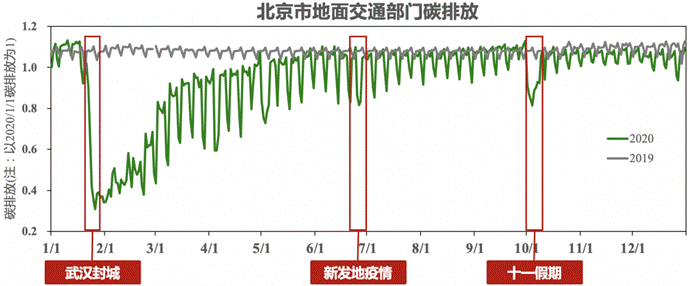
Fig. 3 Schematic Diagram of Daily Emission Fluctuation of Ground Transportation Sector in Beijing in 2020
Dou Xinyu, a doctoral student in the Department of Earth System Science of Tsinghua University, is the first author, and Associate Professor Liu Zhu of the Department of Earth System Science of Tsinghua University is the corresponding author. The collaborators include the teams of Professor Zhang Qiang and Associate Professor Peng Yiran from the Department of Earth System Science. The study has received the support from the National Natural Science Foundation of China (No. 41921005 and No. 71874097), Beijing Municipal Natural Science Foundation (No. JQ19032) and Qiu Shi Science & Technology Foundation.
Paper link:
https://www.cell.com/the-innovation/fulltext/S2666-6758(21)00107-7
Contributed by: Dou Xinyu
Edited by: Wang Jiayin
Reviewed by: Huang Xiaomeng